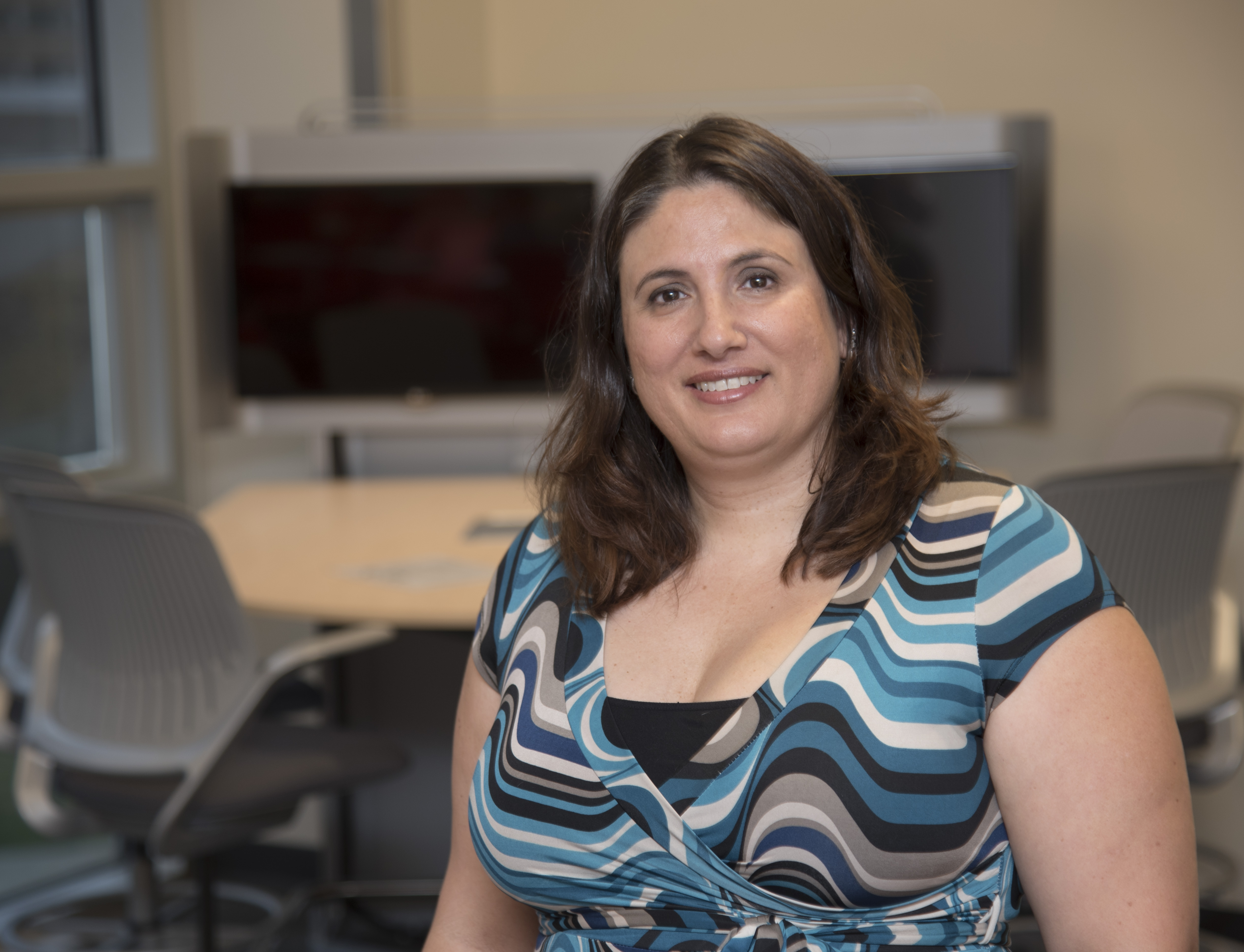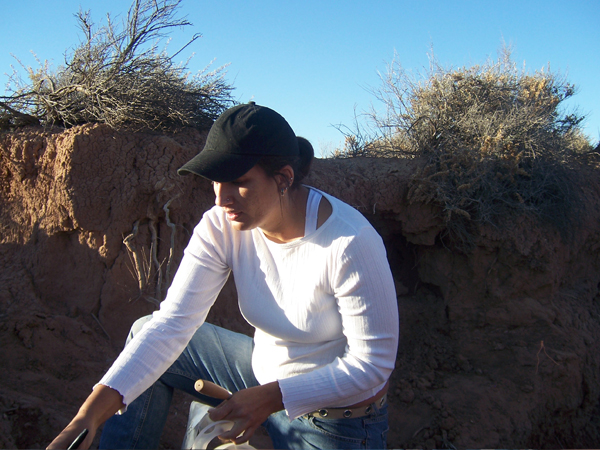New SHRP faculty digs big data

With only a few weeks left in her premed undergraduate degree program at the University of California, Davis, Shamsi Berry decided she'd rather have a degree in physical anthropology. Little did she know that she had taken the first step on the road to becoming a leader in one of the fastest-growing fields in health care: informatics.
Berry joined the faculty of the Health Informatics and Information Management Department at the University of Mississippi School of Health Related Professions in July. The department's Master of Health Informatics program is one of only seven in the country accredited by the Commission on Accreditation for Health Informatics and Information Management Education.
Her family's decision to move across the United States could be compared to the aforementioned degree change. It was a decisive action that happened quickly.
“When I moved here, we had a two-and-a-half week old baby,” Berry said. “I decided to do everything at once. I turned 40, a week later had the baby, two weeks later moved out here, and two weeks after that started this job.” She said it was “pregnancy adrenaline” that allowed her to accomplish everything at once.
But how does one get to informatics by way of anthropology?
“I was still planning to go to medical school,” Berry said of her decision to change degrees. “I took the MCAT.”
In the end, Berry decided that she wanted to seriously pursue anthropology. “I had an amazing anthropology professor that really inspired me,” she said. Berry attended graduate school at the University of New Mexico and received her Ph.D. in biological anthropology in 2011. While working on her doctorate, Berry held a position as the chief laboratory assistant for the Laboratory of Human Osteology at the Maxwell Museum of Anthropology at UNM, giving tours, processing skeletal remains, keeping inventories and taking part in excavations.

Berry works at the Pottery Mound, New Mexico dig site during while earning her doctorate.
When the Maxwell Laboratory received a large grant to digitize the James K. Economides Orthodontic Collection, she was introduced to big data management as the chief orthodontic research assistant.
“That's where I got involved in creating data standards and informatics,” Berry said. She was tasked with creating 88 new data terminology standards with which to classify orthodontic measurements from approximately 5,000 patients of a retiring Albuquerque orthodontist. Because of the unique racial and ethnic makeup of New Mexico - 10 percent Native American and 48 percent Hispanic according to 2015 data from the U.S. Census Bureau - the collection provides researchers access to a more diverse population.
“I was sort of hooked on this new aspect,” Berry said. Her interest led her to pursue a three-year informatics fellowship at UNM which required a second master's degree in biomedical sciences with a specialty in clinical research as well as a certificate in biomedical informatics which she earned from Oregon Health and Science University.
“During the fellowship, my studies were focused on creating what metadata or variables needed to be associated with these full-body CT scans that were being produced at the medical examiner's office,” she said. There are around 11,000 high resolution full-body CT scans in the collection.
The New Mexico Office of the Medical Investigator began using MRIs and CT scans to perform “virtual autopsies” several years ago. The result of this practice is an enormous amount of data that can be utilized by researchers in a myriad of fields, if organized in a manageable manner.
The above “if” is the crux of what is an informaticist: a data wrangler. It's the informaticist's job to corral, categorize and organize data into forms that allow researchers to see connections, make correlations and come up with the answers to health problems.
“I queried 72 experts in multiple fields: anthropology, informatics, medicine, dentistry, medical implants - a wide variety of people,” Berry said. “I was hoping that we would get about 20 variables that were important to collect. They came back with 59.”
Of those 59 variables, the top five were to be expected: birth date, death date, medical diagnosis, primary cause of death and contributing cause of death. The list goes on to include smoking status, drug use, veterans status, height, weight, socio-economic status, history of dental care as an adult and as a child, implanted devices, country of birth, major life occupation, genetic disorders and more.
The team working on the database at UNM, of which Berry is a member, recently received a $700,000 grant from the National Institutes of Justice to complete the database project, which is a boon for SHRP students in the HIIM program.
One suggestion of the accrediting body to the master's program was that the capstone project for the course be more application oriented than research oriented. Berry said word of the grant came at just the right time.
“I found out I had funding after I had been here for two months, right when we were talking about what kind of hands-on project the students could be involved with,” she said. “It worked out well that I had a project ready to go.”
Berry said her job is to standardize the outputs from the 59 variables and clean that data.
“The students are going to help me create data terminology standards,” she said. “We will be calling next of kin for some of the information, not just pulling the information from the Medical Investigator's record.” The students will also be involved in developing protocol for when next-of-kin information differs from the Medical Investigator's information.
The database will be housed in UNM's Center for Advanced Research Computing. The team will also design a website through which researchers may request access to the data.
“My main goal was to make this not just available in informatics, anthropology or forensics,” Berry said. “I want it to be open to multiple fields for research.”
Along with the hands-on project, Berry will be teaching a new class titled Data Architecture, Analytics and Visualization which will utilize the software Qlik, statistics, data standards and a leveling course designed for students entering the program regardless of their background.

“We are thrilled to have Dr. Berry join the HIIM faculty at SHRP,” said Dr. Lisa Morton, professor and chair of health informatics and information management. “Her professional credentials in health informatics along with her expertise in data analytics and data mining bring to the Medical Center a rarely encountered combination of knowledge and skill in our field. Through her current research projects, Dr. Berry is providing HIIM graduate students with hands-on informatics skills needed to address real world problems.”
“Informatics is a large and growing field,” Berry said. “There's no formal definition of informatics at the moment, so I like to say it's where data and improving health intersect - basically, how to store, retrieve and use that data to improve health. The fact that we are one of seven accredited programs in the nation, that's a big deal. Frankly, our students are sought after and get good jobs. We are looking to do some really exciting things in the future.”
As it turns out, Berry's biological anthropology days are not quite behind her. Upon arriving at the Medical Center, she learned of the Asylum Hill Project under the direction of Dr. Ralph Didlake, associate vice chancellor for academic affairs.
Still in the planning stages, the project's intent is to exhume and catalog skeletal remains of former patients of the state asylum that was once located on the land that is now the UMMC campus in Jackson. Two objectives of the project are to create a premier bio-archeological resource for shared scholarship and to create a respectful memorial that will establish a legacy for the Mississippians interred here.
Didlake said Berry's experience in cataloging human skeletal remains will be a valuable addition to what will be a large, long-term project.
“I feel absolutely lucky that we have a content expert who can immediately come on board to help us with the cataloging, curation and database management component of the project,” he said.


